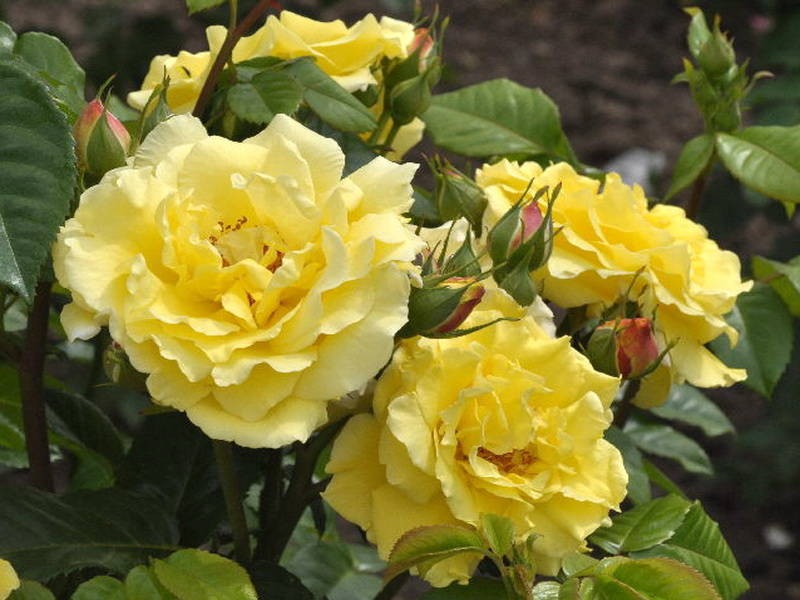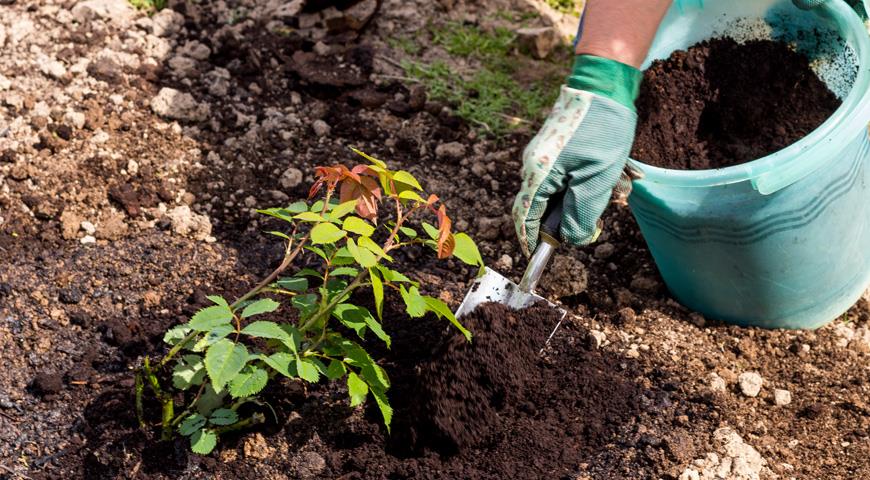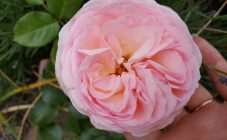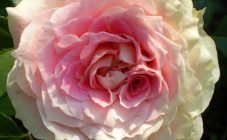Climbing roses are a type of cultivar that has relatively long shoots with flowers over 4 cm in diameter. They are grouped in small inflorescences. The flowers are shaped like hybrid tea varieties. Rose Lucia, or Lucia (Lichtkonigin Lucia), is one of the representatives of this species. Climbing rose Lucia is a park variety, which is also called grandiflora. It was bred by the famous scientist and breeder W. Cordes back in 1966 in Germany. Today culture is one of the most demanded.
Description and characteristics of the variety
The bud forms a pointed, with a reddish tip from a dense curl, which eventually transforms into a large, slightly cupped flower. Rose petals of Grandiflora Lucia are slightly wavy. Initially, the inflorescences have a bright yellow or lemon color, then they turn slightly pale. They are resistant to rain and frost (up to -7 ° C). They have a pleasant aroma. The flowering period is rather long - from late May to late autumn. Rosa Likhtkenigin Lucia has shiny dark colored leaves and is resistant to diseases.
Persistent and lush flowering, subject to the agrotechnical rules of the Lucia rose, the delicate aroma and attractive emerald leaves, unpretentious care and high frost resistance have made this ADR rose popular.
Lucia rose bushes do not exceed 1.5 m in height. Strong shoots with sharp thorns, tend upward and branch strongly, forming a rigid frame.
Features of planting and care
First of all, you need to find a suitable place for the Lichtkonigin Lucia rose. This culture feels most comfortable in a well-lit area. Timely, abundant watering and sufficient sunlight contribute to an especially lush flowering. Experts recommend planting seedlings in places sufficiently sheltered from the wind, near hedges and walls. In addition, you need a loose, fertile soil that allows moisture to pass through well.
Before planting, the root system of the seedlings must be soaked in water, the optimal duration of the procedure is 2 hours. For better root formation, it is recommended to use special growth stimulants. You should also add a previously prepared mixture of soil, humus and mineral fertilizers to the 40 × 40 cm hole. Next, you need to remove the seedling from the bucket, remove all damaged and dried roots, straighten them and place them in the pit. Cover with the previously prepared mixture.
In the end, it remains to compact the soil, make an irrigation circle and water abundantly. Then you need to spud the rose to a height of about 30 cm.
Rose Lucia Likhtkenigin is unpretentious in care, but it is important to follow simple rules:
- you need to water it in a timely manner so that moisture does not get on the green mass and buds in order to avoid fungal diseases;
- withered flowers and weak shoots should be cut to stimulate the emergence of more resistant and strong;
- it is recommended to feed 1-2 times a month using organic and mineral fertilizers intended for roses;
- in the fall, you need to spud Liechtenstein Lucia rose, cover with foliage or craft paper;
- in the spring you need to huddle the plant again, as well as add compost to the ground;
- to give the bush a beautiful shape in spring, it is recommended to prune;
- the bush also needs to loosen the soil around the bush.
Lichtkonigin Lucia can be planted not only in groups, but also singly.When planting in the first way, you should maintain a distance of 3 m between the bushes. Growing intensively, climbing roses delight not only with their marvelous aroma and wonderful flowering, but also with a slight coolness, which is very useful on hot summer days. In addition, rose Lucia is used in rose gardens and compositional plantings, as well as for landscaping park areas and decorating flower beds, gazebos, and hedges. It is appropriate everywhere, which is why it is so popular among flower growers!















